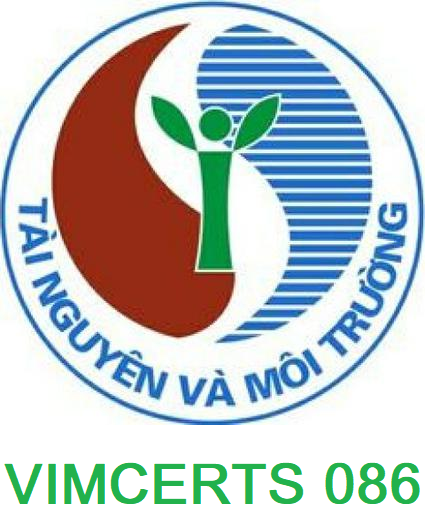1. WHAT IS GREENHOUSE GAS?
Greenhouse gases (GHGs) are components of Earth’s atmosphere, both natural and human-induced, that absorb and emit radiation at specific wavelengths within the infrared spectrum emitted by the Earth’s surface, atmosphere, and clouds.
GHGs include carbon dioxide (CO2), methane (CH4), nitrous oxide (N2O), hydrofluorocarbons (HFCs), perfluorocarbons (PFCs), and sulfur hexafluoride (SF6). Additionally, the unit used for GHGs is the carbon dioxide equivalent (CO2e).
2. WHAT IS A GREENHOUSE GAS INVENTORY?
Greenhouse gas inventory is defined by Decree No. 06/2022/ND-CP on “Regulations on reducing greenhouse gas emissions and protecting the ozone layer,” issued by the Government on January 7, 2022, as:
“Greenhouse gas inventory is the activity of collecting information, data on greenhouse gas emissions sources, calculating greenhouse gas emissions, absorption within a specified scope and a specific year using methods and procedures issued by competent authorities.”
3. WHY IS A GREENHOUSE GAS INVENTORY NEEDED?
With the Environmental Protection Law 2020 in effect, greenhouse gas inventory will become mandatory for nearly 2000 enterprises in Vietnam. Furthermore, conducting greenhouse gas inventory provides the following benefits to enterprises:
- Fulfilling obligations to state management agencies on environmental management;
- Proactively understanding the emission situation of the enterprise;
- Proactively developing plans, roadmaps for emission reduction in the future, limiting risks related to exceeding greenhouse gas emission standards;
- Creating a competitive advantage for climate change-related products, environmental protection;
- Enhancing the image and position of the enterprise.
At the COP26 Conference, Vietnam committed to achieving net zero emissions by 2050.
4. SUBJECTS MUST PERFORM GREENHOUSE GAS INVENTORY
Enterprises with annual greenhouse gas emissions of 3,000 tons of CO2 equivalent or more or meeting one of the following criteria:
- Thermal power plants, industrial energy-consuming enterprises with annual energy consumption of 1,000 tons of oil equivalent (TOE) or more;
- Freight transport businesses with annual fuel consumption of 1,000 TOE or more;
- Commercial buildings with annual energy consumption of 1,000 TOE or more;
- Solid waste treatment facilities with an annual operating capacity of 65,000 tons or more.
5. AREAS AND ROADMAP FOR GREENHOUSE GAS INVENTORY
There are 6 areas that must conduct greenhouse gas inventory:
- Energy: Industrial energy production; Energy consumption in industry, commerce, services, and residential areas; Coal mining; Oil and gas extraction.
- Transportation: Energy consumption in transportation.
- Construction: Energy consumption in the construction industry; Industrial processes in building material production.
- Industrial processes: Chemical production; Metallurgy; Electronics industry; Use of substitutes for ozone-depleting substances; Production and use of other industrial products.
- Agriculture, forestry, land use: Livestock farming; Forestry and land use change; Crop cultivation; Energy consumption in agriculture, forestry, and fisheries; Other emissions in agriculture.
- Waste: Landfill; Solid waste treatment by biological methods; Incineration and open burning of solid waste; Waste disposal and wastewater discharge.
The greenhouse gas inventory roadmap:
Based on meetings and actual data and the law having been approved, the following basic roadmap has been established:
- Develop and implement a plan to reduce greenhouse gas emissions for the period 2023-2025;
- In 2023: Provide information, data, and develop a greenhouse gas inventory plan;
- In 2024: Conduct greenhouse gas inventory at the grassroots level, develop a biennial inventory report;
- In 2025: Complete the grassroots greenhouse gas inventory report; before December 31, 2025: approve the plan to reduce greenhouse gas emissions from 2026-2030, send to the Ministry of Natural Resources and Environment and relevant ministries, provincial-level People’s Committees.
- The period 2026-2030: Reduce emissions, exchange carbon credits.
6. FACILITY-LEVEL GREENHOUSE GAS INVENTORY PROCESS
According to Circular No. 38/2023/TT-BCT of the Ministry of Industry and Trade, which takes effect from February 11, 2024, the technical process of greenhouse gas inventory at facility-level in the Industry and Trade sector is conducted through the following 8 steps:
- Determine the scope of greenhouse gas inventory at facility-level.
- Collect data on facility-level greenhouse gas inventory activities.
- Select greenhouse gas emission factors at facility-level.
- Determine the method of conducting greenhouse gas inventory at facility-level.
- Implement quality control of grassroots greenhouse gas inventory.
- Assess the uncertainty of facility-level greenhouse gas inventory.
- Recalculate the results of facility-level greenhouse gas inventory.
- Develop the report on facility-level greenhouse gas inventory results.
Conclusion
In the context of increasing climate change issues and the negative impact of GHGs, conducting greenhouse gas inventory becomes more necessary and important than ever. By identifying the sources and amount of GHG emissions, organizations can develop mitigation measures and enhance sustainable business environments.
Through conducting greenhouse gas inventory, organizations not only meet regulatory requirements and standards but also enhance the credibility and trust of customers, partners, and the community in the organization. Moreover, conducting greenhouse gas inventory helps organizations optimize resource management, reduce operational costs, and create new business opportunities.
In summary, greenhouse gas inventory is not only an obligation of organizations but also an opportunity to demonstrate commitment and leadership in environmental protection. With increased awareness of the negative impacts of GHGs, conducting greenhouse gas inventory plays a crucial role in building a sustainable future for us and future generations.
If you need more information related to conducting greenhouse gas inventory, please call the Hotline: 0909-714-566 or leave your information HERE for Chugai Technos to promptly contact you to address inquiries and provide support.

